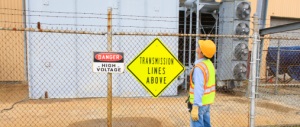
Electrical Safety
Electrical safety policies, procedures, and training are needed to prevent burns, shocks, electrocution, and other hazards. Regular businesses and homes have enough electricity to cause severe injury or death, and all electrical systems have the potential to cause harm. Employers must make employees aware of any potential risk with electrical hazards present in any work environment in order to prevent injury. These resources will help guide you in formulating the right policies and procedures.
Disclaimer:
The information contained in this publication was obtained from sources believed to be reliable. LGRMS make no representations or guarantee as to the correctness or sufficiency of any information contained herein, nor a guarantee of results based upon the use of this information and disclaims all warranties expressed or implied regarding merchantability, fitness for use and fitness for a particular purpose. LGRMS does not warrant that reliance upon this document will prevent accident and losses or satisfy federal, state and local codes, ordinances and regulations. You assume the entire risk as to the use of this information.
|
|
Electrical Safety: Student Manual
January 27, 2016
| CDC and NIOSH
The manual is designed to engage the learner in recognizing, evaluating, and controlling hazards associated with electrical work.
|
|
|
Electrical Safety Sample Policy
January 27, 2016
| City of Garden City, Georgia
This sample policy helps ensure that employees and contractors understand the importance of working with electricity safely.
|
|
|
Electrical Functional Area Qualification Guide
January 27, 2016
This guide is intended to be used as a tool to help establish expectations for personnel performing tasks that affect electrical safety and assure that they will be qualified to a minimum standard consistent with their responsibilities and authorities.
|
|
|
Repair Welder Electrocuted
January 27, 2016
| U.S. Department of Labor
This short video is a fictional case study about an electrocuted repair welder and what went wrong.
|
|
|
Electrical Safety Awareness for Non-Electrical Workers
January 27, 2016
| Alberta Construction Safety Association (ACSA)
Stay safe by learning about the potential electrical hazards on your work site. This video gives an overview of the risks you should look for, the consequences of electrical hazards, and the protective equipment you may use to reduce the risk.
|